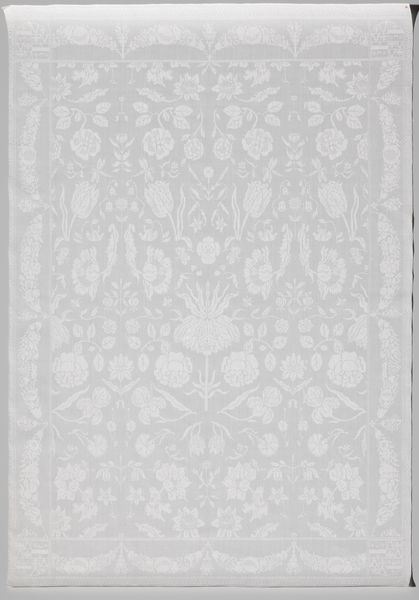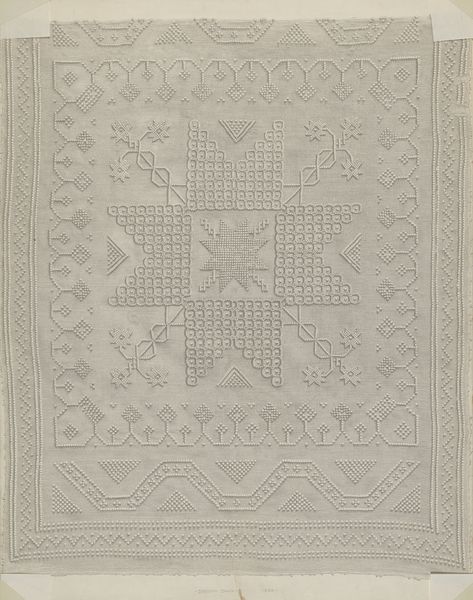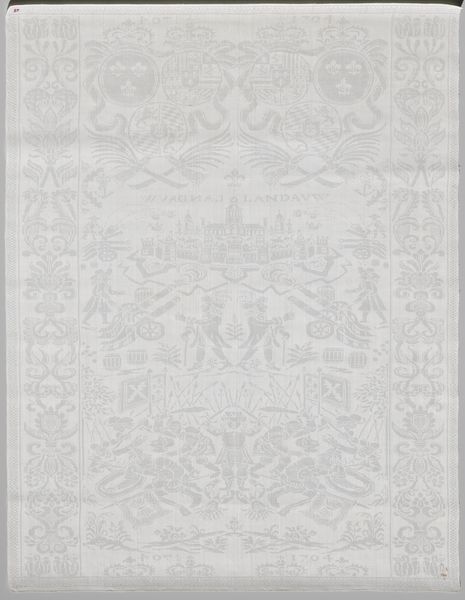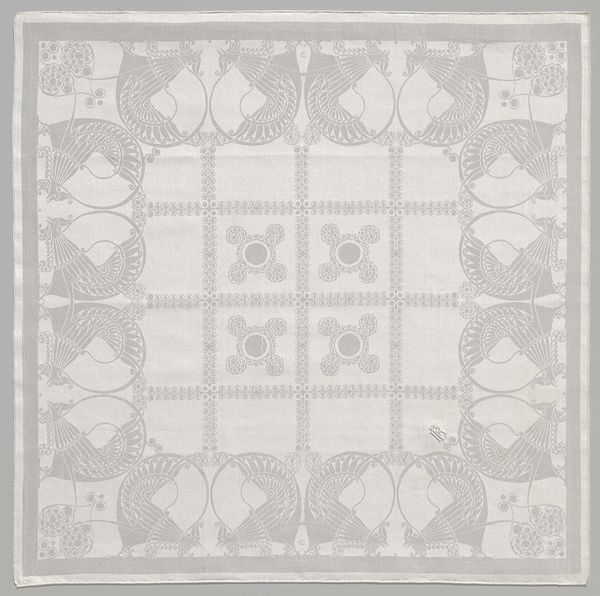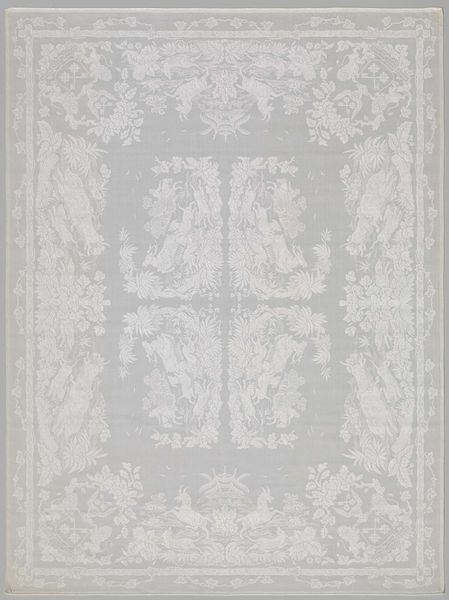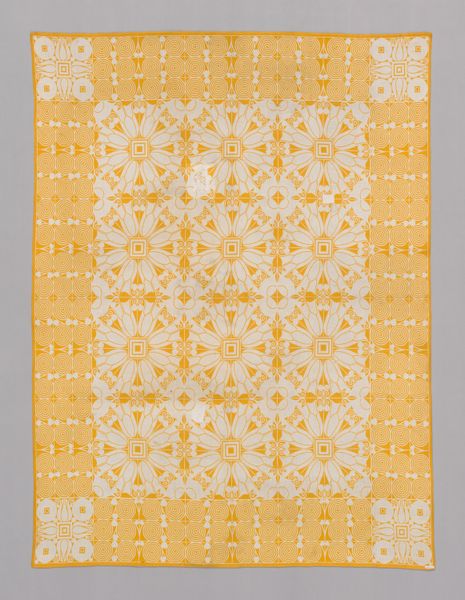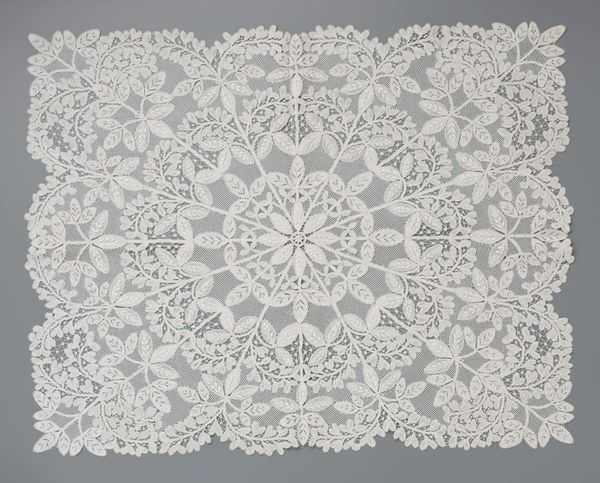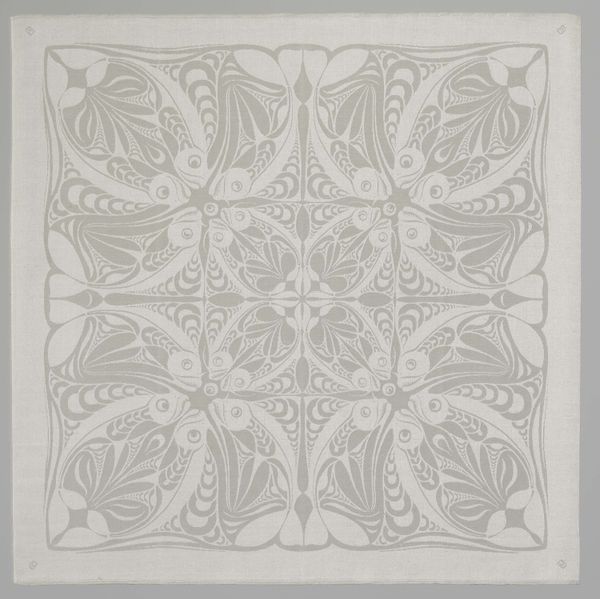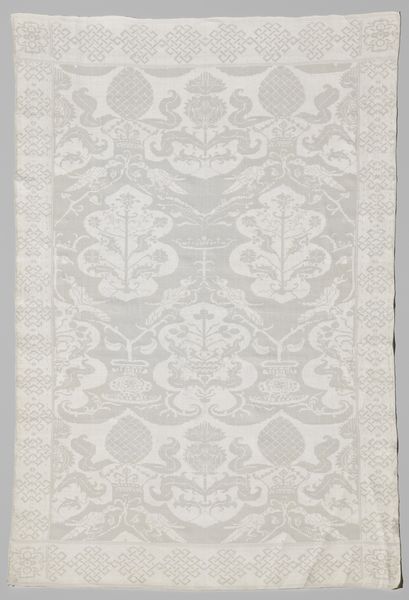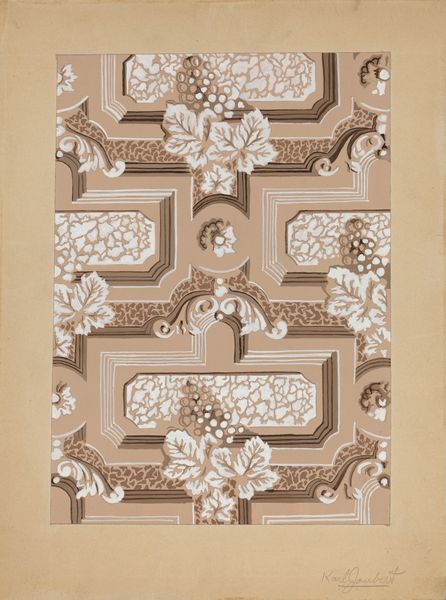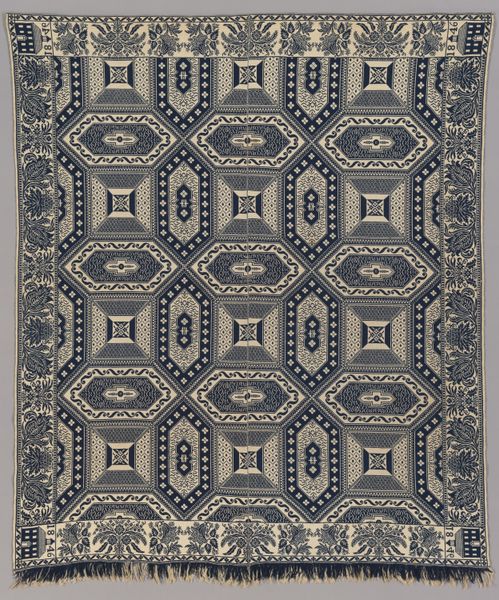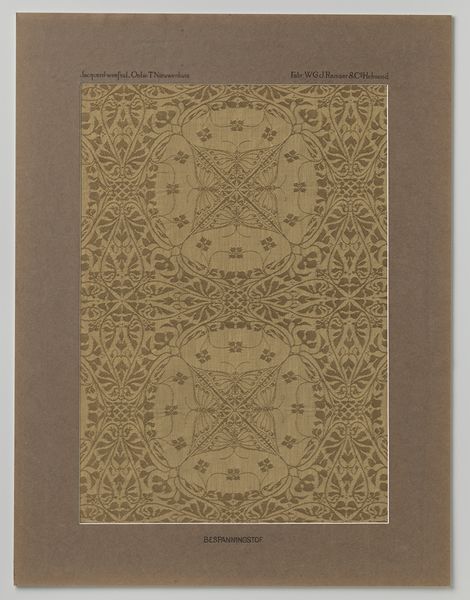
textile
#
art-nouveau
#
textile
#
geometric pattern
#
repetition of pattern
#
decorative-art
Dimensions: height 103 cm, height 102 cm, width 85.6 cm, width 85.5 cm
Copyright: Rijks Museum: Open Domain
Curator: Before us is a linen napkin crafted around 1907 by Theo Nieuwenhuis, titled "Servet met patroon 'Appelbloesem'", meaning "Napkin with 'Apple Blossom' Pattern." Editor: My immediate impression is one of delicate repetition and refined restraint. The pale color palette amplifies the intricate floral designs; it feels both comforting and meticulously crafted. Curator: Precisely. Nieuwenhuis worked in a period captivated by both Art Nouveau and a broader interest in decorative arts. What's compelling here is how the “high” artistic style is integrated into an everyday, functional object, breaking down hierarchies between art and craft. We must ask who was employed to weave, print, or produce objects like these. What were the conditions of the workers? Who ultimately possessed them? Editor: That’s a crucial lens to apply. But the apple blossom itself also speaks volumes. Blossoms are powerful symbols of spring, of renewal, and of course, fruitfulness. This isn’t just about surface design, but imbuing the object with a symbolic resonance related to the cycles of nature and growth. Curator: And think about the labor involved. Each repeating motif, while seemingly simple, required careful consideration and execution. These designs elevate textiles from mere utilitarian objects to showcases of skillful craftsmanship, reminding us of the artisan's contribution. This period blurred the distinctions, as mass production had not completely industrialized all modes of production; Nieuwenhuis was committed to elevating craft production alongside developments in industrial art. Editor: And consider that this wasn’t merely a random choice of flowers; the apple held very specific cultural connotations at the time. From its ties to biblical stories and original sin, to its celebration as a symbol of youth, beauty and immortality in different cultures, using that particular symbol imbues even an everyday napkin with greater complexity of meaning. Curator: Absolutely, placing it directly in the hands of consumers to then circulate these powerful messages within the domestic sphere. It’s the confluence of intention, skill, and consumption. Editor: Thinking about this napkin and its layered symbols enriches a moment, transforms even the most mundane act of dining. Curator: Agreed. Appreciating how this napkin blurs those disciplinary boundaries reveals both the labor and intention that shaped its creation, enriching our experience with such a functional piece.
Comments
No comments
Be the first to comment and join the conversation on the ultimate creative platform.
